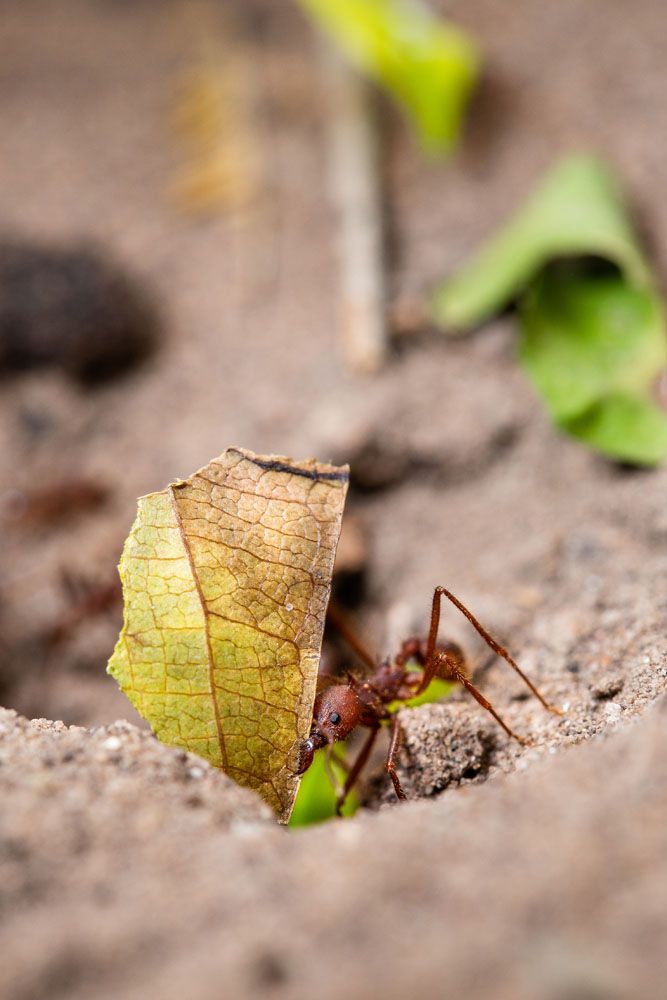
Texas Leafcutting Ant – Atta texana
Texas Leafcutting Ant – Atta texana
Common Name: Texas Leafcutting Ant
Latin Name: Atta texana
Appearance:
The Texas Leafcutting Ant, scientifically known as Atta texana, is a large ant species known for its distinctive features. Size and Morphology: Texas Leafcutting Ants are large ants with workers ranging in length from 6 to 12 mm. They exhibit polymorphism, which means the colony contains different castes with varying sizes and functions. Major workers, for example, are larger than minor workers.
Host Plant:
Leafcutting in Texas Ants are herbivorous ants with distinct eating behaviors. They do not eat the leaves but rather utilize them to produce fungi. These ants’ major host plants are numerous species, particularly those with soft and supple leaves. They are well-known for preying on crops and ornamental plants.
Territory:
These ants are indigenous to the southwestern United States and portions of Mexico, where they build elaborate subterranean nests. Texas Leafcutting Ant colonies may span enormous territories and include millions of individuals.
Damages caused by Texas Leafcutting Ant:
While Texas Leafcutting Ants do not ingest the leaves they cut, their foraging habits can cause severe plant damage. This ant species’ workers cut leaf fragments and transport them back to the nest. These leaves act as a substrate for the growth of a specific fungus. The ants then consume the fungus, which aids in the breakdown of plant material. Texas Leafcutting Ants can harm crops such as vegetables, ornamental plants, and fodder crops in agricultural settings. The removal of leaf fragments can affect plant health and yield.
Life History and Habitat:
Texas Leafcutting Ants have a complicated social system inside their nests. Colonies comprise a queen, reproductive males, and several worker castes. The ants participate in a cooperative system where specialized worker castes perform various activities. Nuptial flights occur for mating, and new colonies are created by mated queens building new nests.
